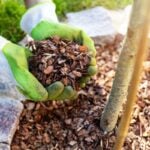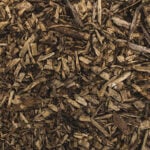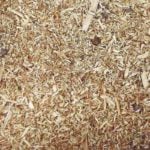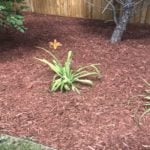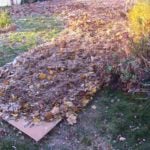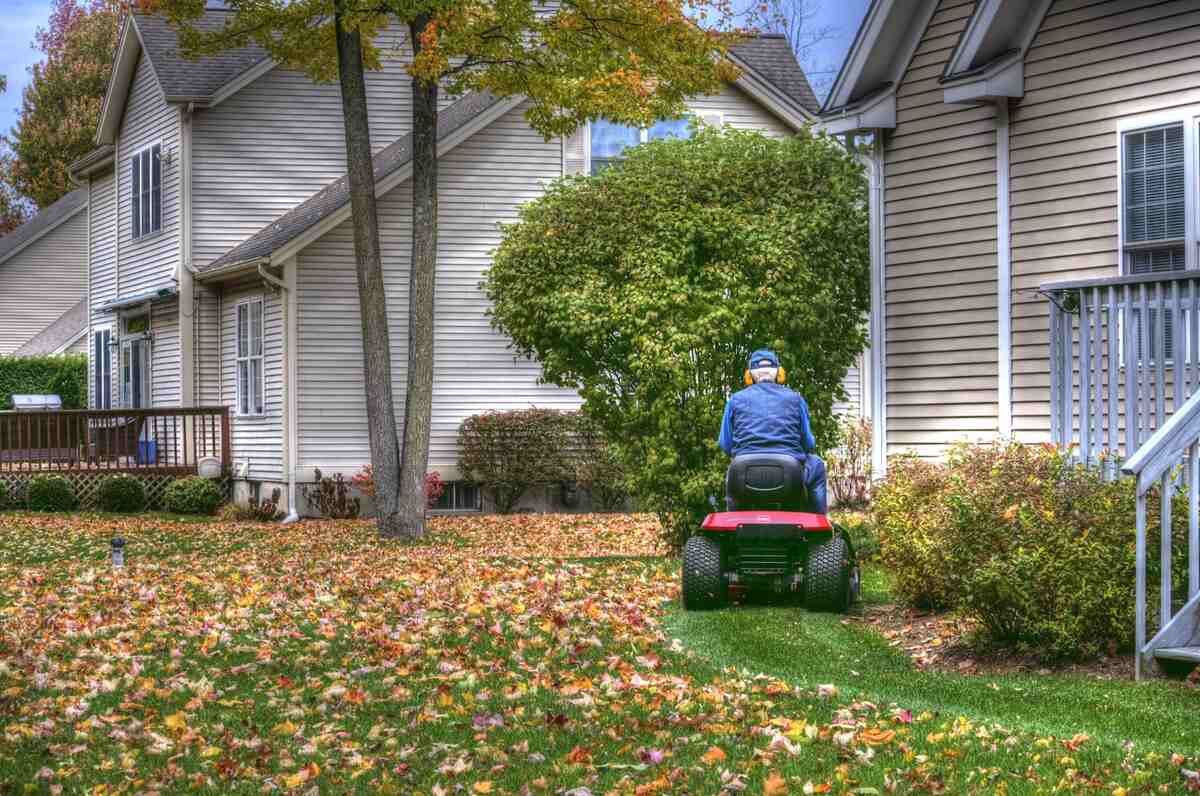
Homeowners have many outdoor chores to keep up with: raking leaves, weeding, fertilizing, and the list goes on. But there’s one easy way to boost your lawn – by adding mulch. In this article, we will tell you how to improve your lawn with mulch.
From mulching grass clippings to leaves, we will tell you exactly how to add organic matter to your lawn to make it more beautiful and healthy.
What is Mulch?
Mulch is any type of material that you spread on the ground around your plants, forming a layer that helps keep moisture in and weeds out. Mulch is very versatile and can also be used to keep the soil warm in the winter and cool in the summer and prevent erosion.
There are two types of mulch:
- Organic mulch includes shredded leaves, grass clippings, bark chips, wood chips, straws, and pine needles. These materials decompose into the soil, improving its structure and drainage, and boosting its organic content.
- Inorganic mulch includes landscape fabrics, gravel, and stone. This kind of mulch doesn’t decompose or provide nutrients. Still, they are suitable for use on slopes where erosion is a problem and for holding moisture and blocking weeds.
This blog will focus on organic mulch, especially leaves and grass clippings since they are the best and most environmentally sound option for healthy lawns.
How to Mulch Grass Clippings
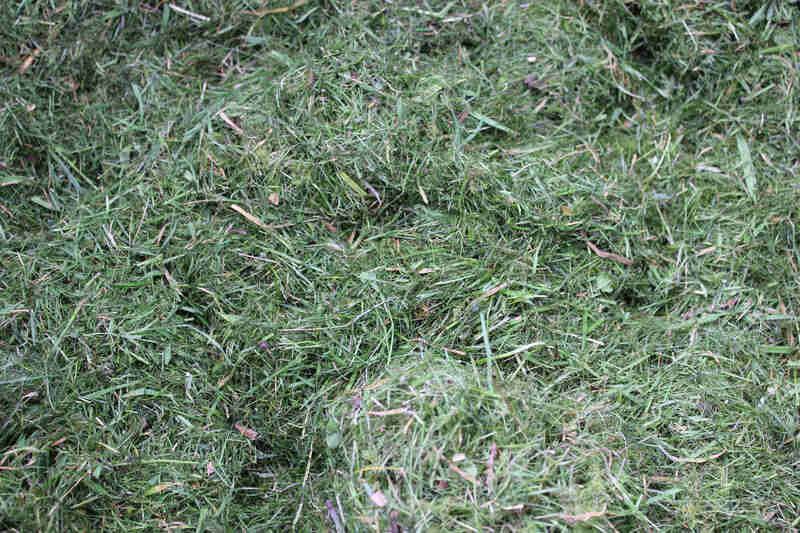
You have two major options when you mow. You can discard the grass clippings, or you can use them as mulch for your lawn. The latter is almost always a better option.
Adding mulch to your lawn is relatively simple. You simply use a mower with special blades (a mulching mower) that will chop up the excess grass into smaller pieces and spread the clippings around. They will then become mulch and keep your lawn healthy.
These shredded grass clippings will help prevent drought damage by keeping the soil moist and will hamper weeds’ development. They are 90% water, so they will decompose quickly, supplying nutrients to your lawn. The best part is they don’t contribute to thatch buildup (unless you already have a thatch problem).
Pro Tip: When spreading the grass clippings on your lawn, ensure that there are no clumps that can smother the grass.
When Not to Mulch Grass Clippings
There are situations where you should not add grass clippings as mulch to your lawn:
- Weeds: If your lawn is infested with weeds like dandelions and chickweed, it’s best to bag the grass clippings to avoid spreading the weeds to other parts of the lawn. If they’re concentrated in a specific area, bag the clippings from that area to avoid spreading the weed seeds.
- Overgrown grass: When you leave your lawn unmowed for some time, the grass blades grow too long and might form thick clumps that can smother your grass instead of decomposing.
- Excessive use of chemicals: If your lawn has been fertilized repeatedly or treated with pesticides and herbicides, the soil might have difficulty breaking down the grass clippings due to the lack of microbial activity.
- Thatch buildup: Grass clippings can contribute to thatch buildup. Ensure your thatch layer doesn’t exceed ½ inch before mulching with grass clippings.
How to Mulch Leaves
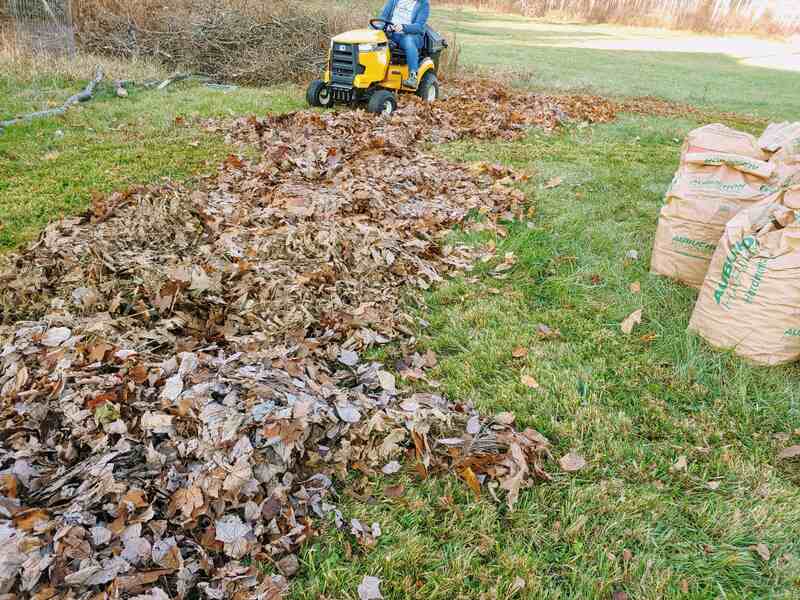
Mulching leaves is a great way to add nutrients back into your soil and maintain healthy grass. It’s also an easy process that might save you the trouble of raking leaves or using a leaf blower (your back will thank you).
Mulching leaves does not mean just spreading a bunch of leaves and calling it good! You need to keep the layers thin so they don’t block sunlight from reaching the ground below. That will help keep your grass healthy by ensuring it has plenty of sunlight and oxygen.
You can mulch your leaves simply by making a few passes with your regular lawn mower, or you can invest in a mulching mower with a special blade. Follow these steps for mulching leaves with a lawn mower:
- Spread the leaves on your lawn in an even layer.
- Set your mower to the highest setting and remove the bag that collects the clippings.
- Mow over the leaves as many times as necessary until they are shredded to about ½ inch in size.
- If you can’t see your grass after this process, reattach the bag and mow over the leaves again to remove the excess.
- Add the mulched leaves you collect to your vegetable garden beds or compost pile.
Other Ways of Mulching Leaves
Besides using a lawn mower, there are other options on the market to mulch leaves:
- Stand-alone mulcher: They work like wood chippers or paper shredders. The main difference from lawn mowers is that you must collect the leaves in your yard and dump them in the mulcher. After shredding, you have to spread them on your lawn manually.
- Hand-held mulcher: Most handheld mulchers are also leaf vacuums and leaf blowers so you can get these three functionalities for the price of one. In addition, they are great for removing leaves from places difficult to rake, such as flower beds or bushes.
- Grass trimmer: You can use a grass trimmer like a kitchen blender and put the leaves in a bucket to shred them. Don’t forget to protect your face, especially your eyes.
Benefits of Mulch
Mulching grass clippings and leaves is like adding compost to the lawn. It keeps the grass healthy by returning nutrients to it. In addition, it saves you money on your budget and time spent maintaining your property.
Benefits to Your Lawn
There are many benefits to mulching your yard. Here are some:
- Retains moisture: Mulch acts as a protective cover to keep water in the soil longer, which allows plants to use as much water as they need without drying out too quickly. That results in healthier plants that are less likely to dehydrate or die of drought stress.
- Nutrition: Mulch reduces the need for fertilization by providing organic matter to your lawn. Mulching can account for 1/4 of a lawn’s annual nitrogen requirements if done regularly. In addition, it increases the biodiversity of the soil since the mulch is decomposed by worms, beneficial bacteria, and fungi.
- Insulation: This protective cover also works as an insulator, keeping the soil temperature warm during cold weather and cool during hot weather.
- Weed protection: Mulching can help control weeds by inhibiting their growth. The layer of mulch smothers the weed seeds and blocks sunlight from reaching them.
Benefits to Your Pocket
Who doesn’t like saving money? Mulching can help you save money and effort, meaning you’ll spend less time doing yard work and more time with your family. Here’s how:
- Buying a bag for your mower can be up to 10 times more expensive than getting mulching blades.
- When you use a mulching mower, you don’t need to rake leaves and grass clippings or empty the collection system repeatedly.
- You may need to cart your grass clippings to a recycling center.
- Mulching can save on water since it prevents it from evaporating too quickly.
- When mulching, you won’t have to fertilize your lawn as much. Mulch can provide up to 1 pound of nitrogen to your yard in a year.
Benefits to The Environment
Mulching is better than using bags, which take up space in landfills. Instead, grass clippings and leaves can be reused and added back into your garden or lawn as needed. In addition, mulching your lawn will reduce the need for fertilizer, which can be bad for the environment in excess.
Moreover, mulching prevents soil erosion, a significant problem in the United States, by reducing the amount of rainwater runoff on your property. It also reduces water usage and prevents pollution by keeping clippings out of storm drains and waterways.
FAQ About Mulch
Mulch does not cause thatch, but it can aggravate the problem if there is already a thatch problem. Homeowners should ensure that the layer of thatch is not thicker than ½ inch before mulching with leaves or grass clippings.
You can mulch grass clippings every time you mow your lawn. But that doesn’t mean you should leave clumps of grass clippings because they can damage the grass underneath them. Make sure the grass is spread homogeneously on your lawn, and avoid mowing when the grass is wet.
Sometimes it can be tricky to know how much mulch to use. You should never use too much mulch on your lawn because a thick layer might smother your grass, reducing soil oxygen and suffocating roots. Spread the mulch so you can still see the grass blades through the layer of mulch.
Call a Professional
Now that you are better equipped with the information on mulching, there is no reason for you to waste any more time bagging grass clippings in your lawn care routine.
However, not all turf-grass problems can be solved by mulching. So if your lawn still isn’t looking as good as you’d like it to, it might be time to call a professional.
Main Image Credit: PublicDomainPictures
![10 Best Mulching Lawn Mowers of 2022 [Reviews]](https://www.lawnstarter.com/blog/wp-content/plugins/related-posts/static/thumbs/0.jpg)
